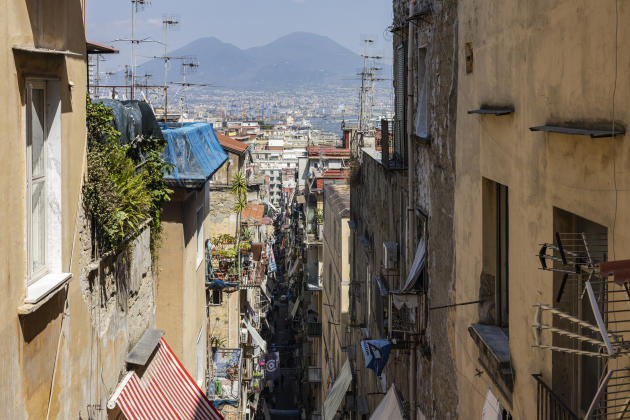Sasi Visone, 47, was a simple hairdresser, a parrucchiere in Italian, when tourists appeared along the narrow, straight lanes of the Quartieri Spagnoli – the Spanish Quarters – where he grew up and which foreign visitors had carefully avoided a few years earlier. While other merchants were converting to street food, the checkerboard layout of this popular enclave in the center of Naples, drawn in the 16the century, began to cover Google Maps with pink pinheads indicating rental rooms and apartments otherwise available for booking on Airbnb.
Precipitated after the Covid-19 pandemic, but already initiated a few years earlier, these rapid transformations have opened up a “golden period” for the 15,000 inhabitants of the Spanish Quarters, according to Mr. Visone. He remembers feeling the wind change direction when the fashion designers Domenico Dolce and Stefano Gabbana came to his neighborhood to celebrate, in Naples, the thirty years of existence of their house with the support of the then mayor, Luigi From Magisters. The three days of celebration given on this occasion heralded a radical change in the image of Naples and its still popular city center, in Italy and abroad.
On the leprous walls with pastel palimpsests which, in the memory of the inhabitants, still resound with shots fired during the occasional settling of scores, the hairdresser Sasi Visone saw his neighbors posting to the chain and to the attention of foreign visitors, ever more numerous, portraits of Sophia Loren as a pizzaïola, as in the film The Gold of Naples, by Vittorio De Sica (1954), and portraits to the glory of Diego Armando Maradona. The legendary Argentine footballer, who offered the Neapolitan people his first two Italian championship titles in 1987 and 1990, is decked out in the golden halo of a saint.
Invasive and sonorous terraces
Since the post-war period, the economy of the Spanish Quarters, close to the port, has been dominated by prostitution, smuggling and various types of trafficking, between organized crime and petty crime. Its streets, in the lower part, are now overhung with bed and breakfast signs and lined with pizzerias with invasive and noisy terraces. Their small neighborhood cafes began to serve Aperol spritz to go, a cocktail from the Venetian Far North, parachuted into Naples and uniting Italy through the desires expressed by its foreign visitors. Sasi Visone, native of the Spanish Quarters, son of a waiter, has seen fit to accompany the movement. Alongside his pre-existing hairdressing salon, he also had the idea of opening a bar, then merging his two businesses under a single brand: Barruchiere Hair Studio 76.
You have 77.67% of this article left to read. The following is for subscribers only.
